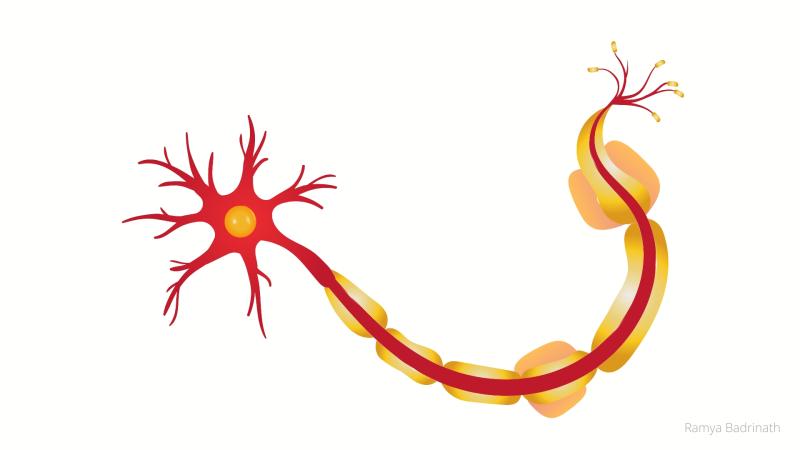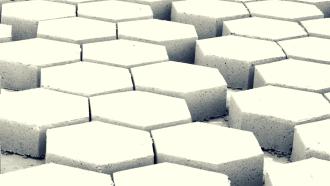
With each passing day, science reveals more about how our brain functions, and opens up more questions about its mysterious ways and illnesses. Since the first known case of Alzheimer’s disease diagnosed in 1906, numerous other neurodegenerative disorders like Parkinson’s disease and multiple sclerosis have been identified. To date, we know very little about these conditions and a possible cure is still a far cry. But, a recent inter-disciplinary study by researchers from India, France and Chile on the biomechanics of axonal atrophy may take us a step closer to a cure.
Scientists have long been confounded by the presence of mysterious swellings or beads along the tail of the nerve cells. These tail-like structures are called axons, and the swellings are referred to as “axonal beading”. These beads are commonly found in the neurons of people suffering from neurodegenerative conditions like Alzheimer’s and multiple sclerosis, ageing, or due to reduced blood flow and injuries. So far, it was believed that accumulation of cell organelles in the axons cause ‘traffic jams’, resulting in such beading.
Besides beading, normal axons also undergo a process of retraction during axonal rewiring. This retraction affects the process of learning and the development of memory by helping in the creation of new neural pathways to store information. However, in cases of injuries and diseases, retraction causes the membrane of the axons to permanently recede from the axonal region and result in neuronal loss.
In their study, the researchers from the Raman Research Institute (RRI), Bengaluru, in collaboration with researchers from France and Chile, provide us with an understanding of the physical forces that drive axonal beading and retraction. The findings could hold new insights on understanding neurodegeneration. The results of the study, funded by the Department of Science and Technology (DST), are published in the Biophysical Journal.
“The initial objective of our study was to understand how or why degenerating axons lose their normal tubular geometry and develop peristaltic shapes,'' says Dr Pramod A Pullarkat from RRI. “We show that this transition may not be due to accumulation of organelles (“traffic jams”) as previously hypothesised but can be due to a physical process driven by membrane tension,” he elaborates.
Previous studies show that these transformations in the axon occur early on in the disease and not just before their death. This observation indicates that elements responsible for the structure of the neuron, known as cytoskeletal elements, are disrupted early on and are accountable for the process of axonal beading and retraction. These cytoskeletal elements include actin filaments, microtubules and intermediate filaments.
The study was conducted on cultured neurons isolated from 8-day chick embryos. It used physicochemical techniques to determine how neurons reacted when their cytoskeletal elements were disrupted. First, they treated the neurons with Nocodazole, a drug that disrupts microtubules. They observed that the axons developed a series of bulges in their membranes similar to axonal beading found in neurodegenerative disorders. However, when treated with Latrunculin-A, an actin-disrupting drug, the axons displayed a different response. The cytoplasm started to retreat from the axon towards the soma — the cell body of the neuron — leaving a thin membrane tube behind. When the neurons were pre-treated with Taxol, a drug that prevents the microtubule from depolymerising, they did not retract. This observation suggests that microtubules play a crucial role in maintaining the shape of the axon.
The researchers also observed that axonal beading and retraction occur away from the axon and towards the soma. They attribute this behaviour to the presence of a stability gradient in the microtubule skeleton. The stability is lower at the distal end of the axons.
The study suggests that when microtubules become unstable and depolymerise, the axonal membrane becomes susceptible to beading and/or retraction. In the case of beading, the microtubule bundle starts to thin out radially due to depolymerisation, and the membrane tension causes the viscous fluid left in the region to form bead-like structures. During retraction, however, the actin and microtubule in the axons depolymerise entirely starting from the distal end. The resulting beading due to membrane tension occurs so quickly that the beads combine to form a single retracting front. Thus, the dynamics of the microtubule, actin and the membrane is responsible for the stability of axons.
“These results allow us to look at axonal stability in a new light. Till now, the focus has been on a few molecular players like beta-amyloid protein. Understanding how the physical mechanisms affect the axonal shape and cause atrophy can provide broader strategies to stabilise axons against atrophy,” explains Dr Pullarkat. “The next step will be to investigate the stability of the polymer skeleton in axons and the factors that regulate this,” he concludes.
With nearly 4 million people in India currently affected by dementia, the study promises broader strategies for cure by revealing the mechanical factors involved in neurodegenerative disorders.
This article has been run past the researchers, whose work is covered, to ensure accuracy.






